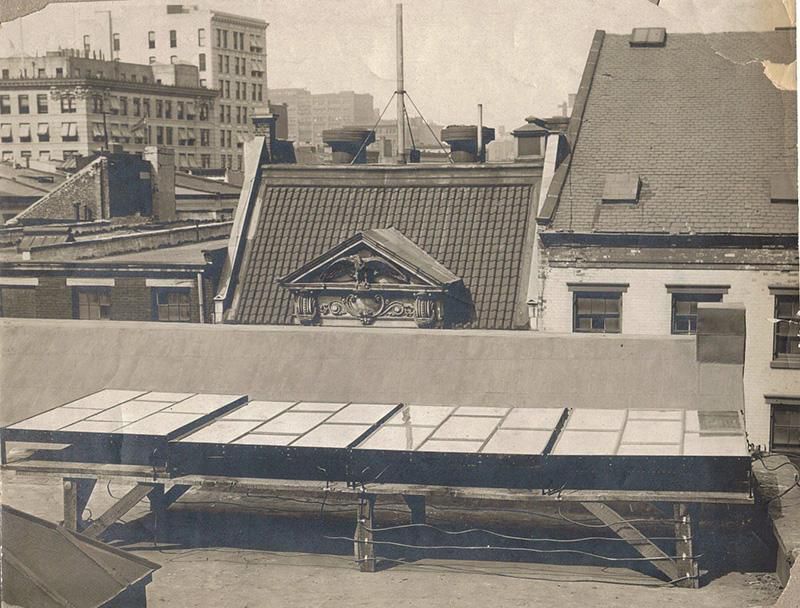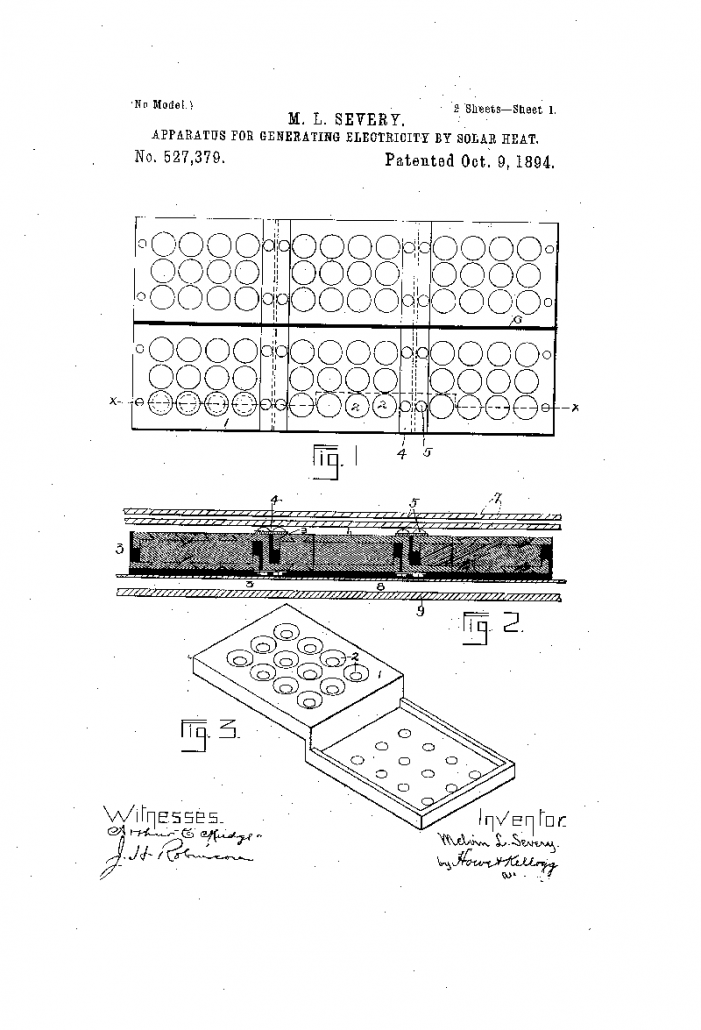Solar Panel History Part 1
More people are deciding to go solar every year. Going solar will reduce or eliminate your electric bill, earn a good return for your investment, increase your property value, protect against rising energy costs, and protect the environment by cutting your consumption of non-renewable energy.
It is fun to find snippets of history that changed the course of solar panel development. The first part of solar panel history takes us from 181 to about 100 years ago. The first discovery of the photovoltaic effect was made in 1839 by Edmond Becquerel in France. August Mouchet, an inspired mathematician, began registering patents for solar-powered engines in the 1860s. This is during the industrial revolution, when many other useful inventions were being created around the world.

Figure 1 First solar panels invented by Charles Fitts on a New York City rooftop in 1884 (https://www.smithsonianmag.com/sponsored/brief-history-solar-panels-180972006/)
In 1883 a New York inventor Charles Fritts created the first solar cell that had an efficiency rate of 1 to 2 percent, less than a tenth of the efficiency of solar panels today. However, this was a start. US patents for solar began being registered as early as 1888 in the by Edward Weston. Weston noticed that the heat given off from the sun’s energy (we know the sun is hot when we sweat in the sunshine) could be used to release elections from a thermopile, or bars of dissimilar metals. These electrons, being released, created a flow, which is electricity. This is the reverse process of the way that light bulbs work, which generate light from heat that is first created by electricity. More discoveries about how the photovoltaic effect works were made around the world during the late 19th century. Mounting them in a way so that the panels could follow the sun was a product of the American inventor Melvin Severy in 1889. This reduced the need for human to move panels throughout the day to follow the sun.

Figure 2 A drawing from Melvin L. Severry’s: “Apparatus for Mounting and Operating Thermopiles”, October 9, 1894 (https://www.smithsonianmag.com/sponsored/brief-history-solar-panels-180972006/)
In the 1890s, Harry Reagan, another American inventor, created the first patent for thermal batteries, which store and release thermal energy from solar panels that was not being used immediately. These batteries however stored heat, not electricity. In 1913, William Coblentz from Washington D.C., introduced the “thermal generator”, which converted electrical energy into mechanical energy. His invention was cheaper and stronger than those proceeding his, making them more accessible for others to purchase and improve upon. You can find more detail on this topic at the Smithsonian Magazine (https://www.smithsonianmag.com/), and other historical references articles.
